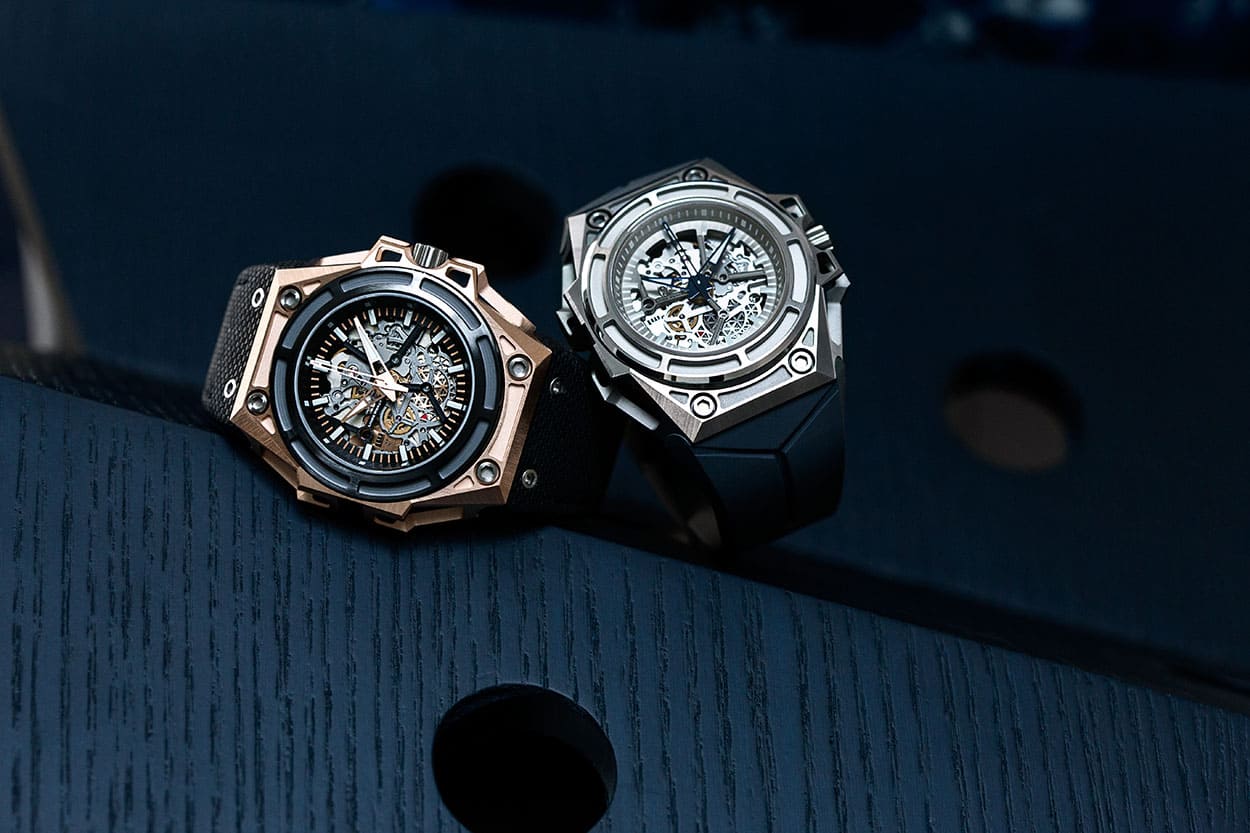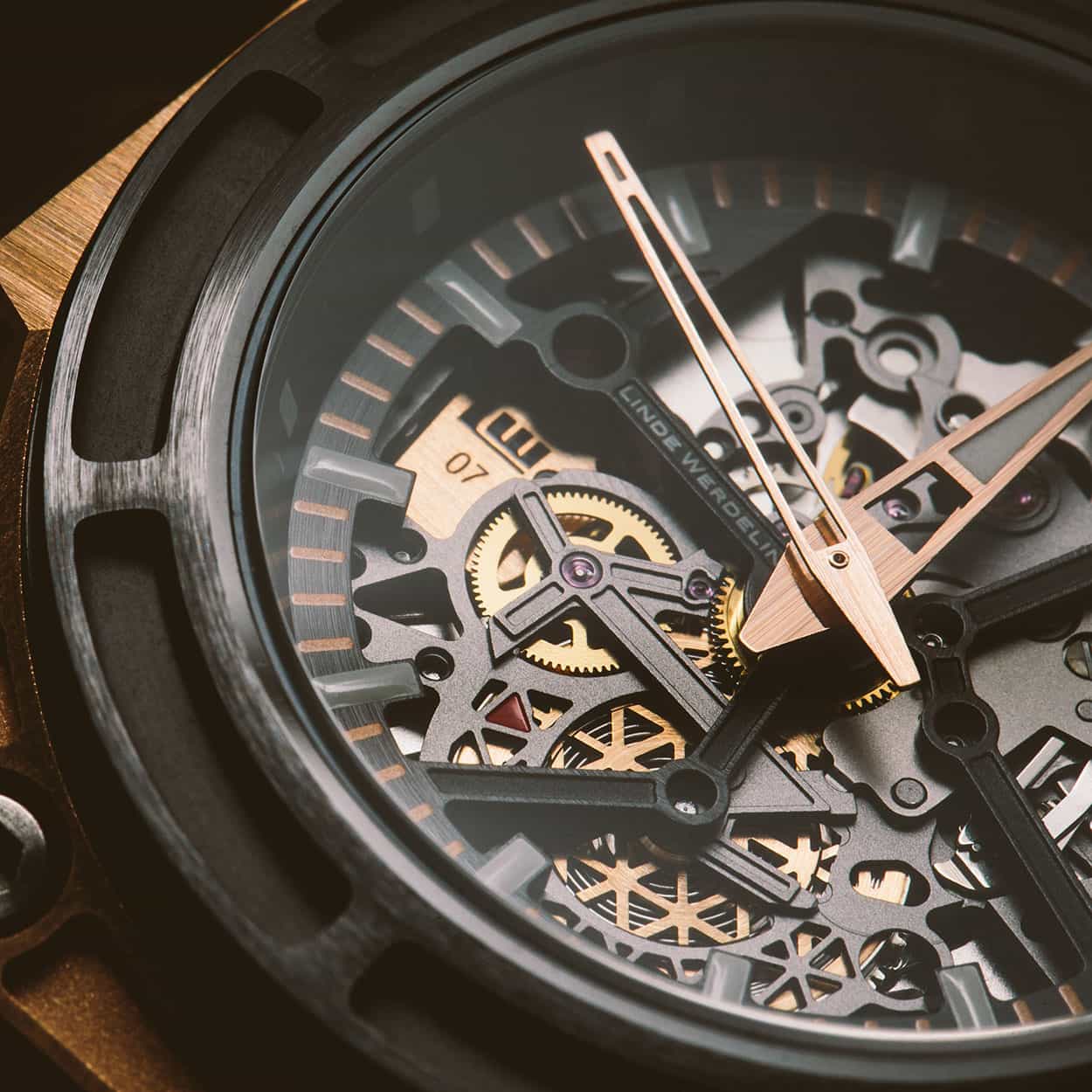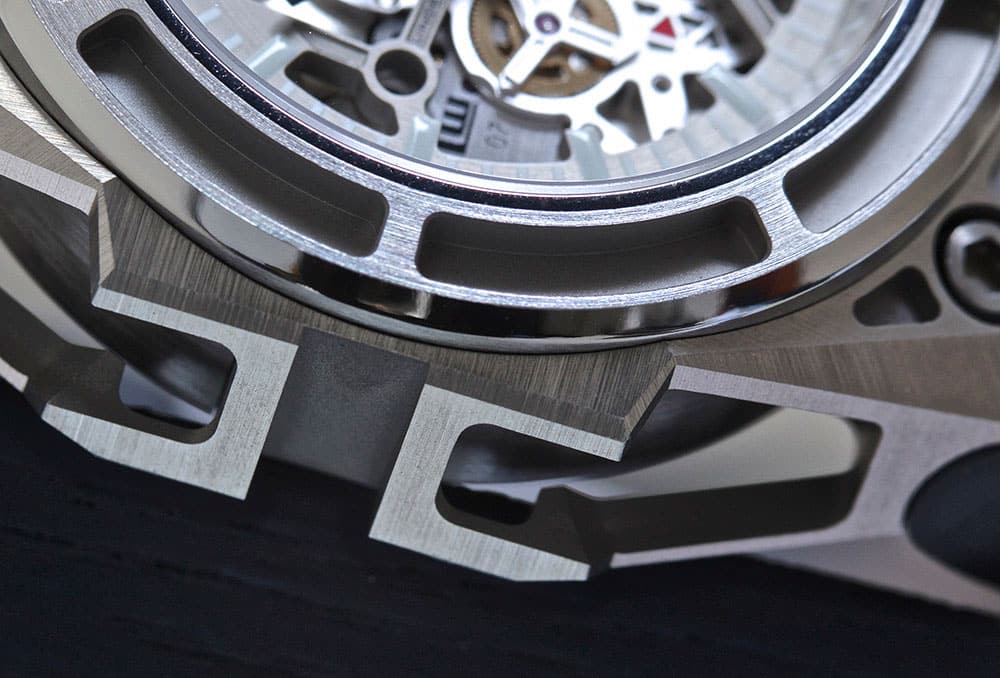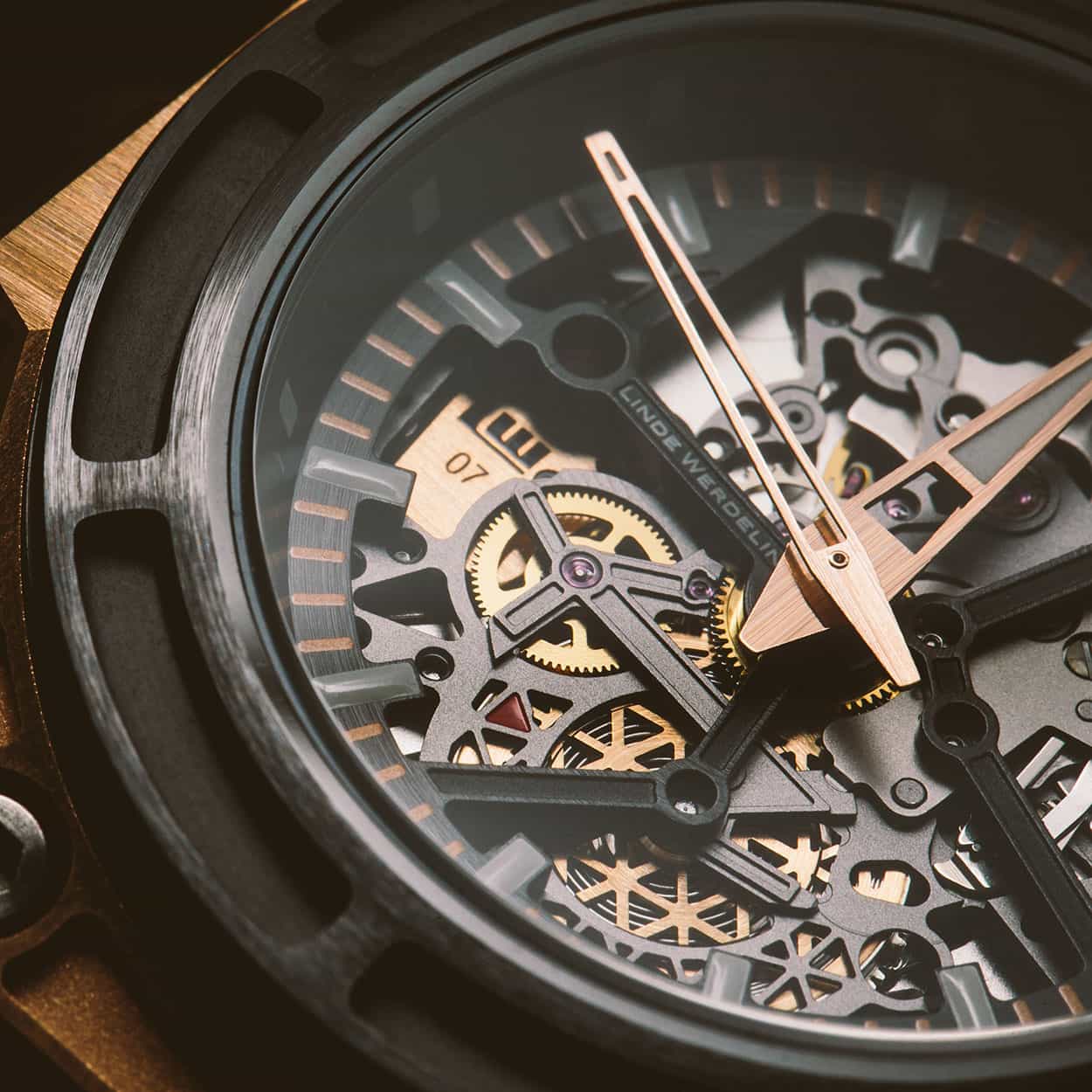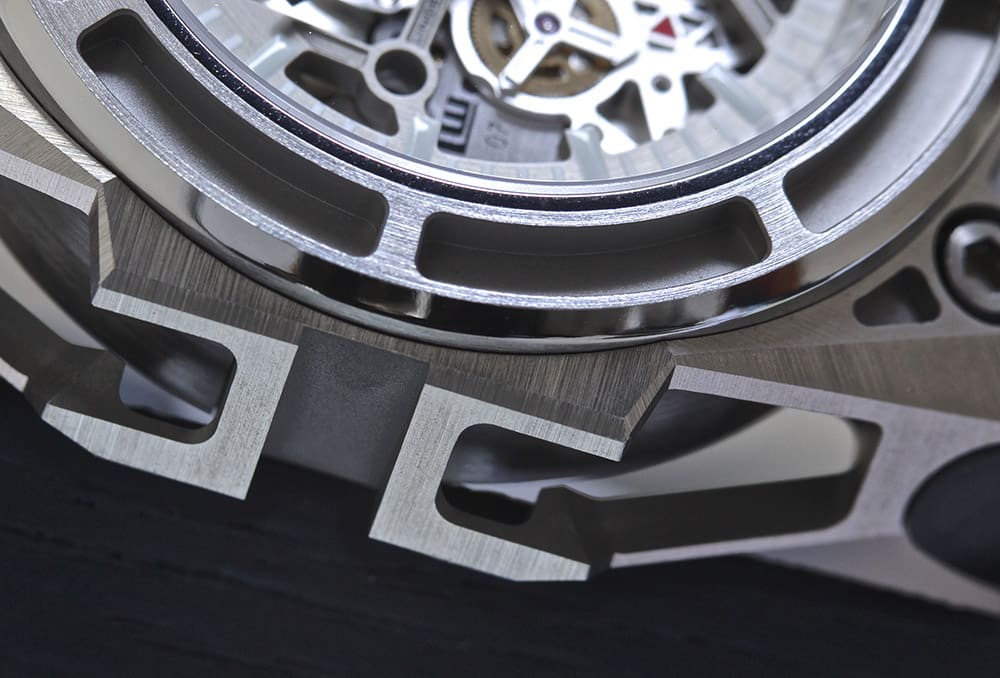Brand of the Month – Linde Werdelin
Ahead of BaselWorld, Linde Werdelin introduced the world to its fourth generation of the SpidoLite, a series originally conceived after a Mount Everest expedition, which debuts as Linde Werdelin’s most extreme skeleton to date, opening the dial up to reveal the brand’s first-ever power reserve indicator. Designed and engineered holistically, the SpidoLite represents an evolution in weight-optimised construction.
The two new models – the SpidoLite Gold and the SpidoLite Titanium – really showcase Linde Werdelin’s continued pursuit of skeletonisation.
As Morten Linde explained, “the parts left in the dial – the skeletonized plates, gears, springs, rubies and so on – are there only because they are absolutely essential. My approach to weight-reduction is one of making no compromises: everything has to be stripped down where possible, but we cannot lose any strength in the construction.” For the movement, the result is LW07 which, while still strong and reliable for the active lifestyle, greatly reduced the complexity of its predecessors and has 35% fewer mechanical components.
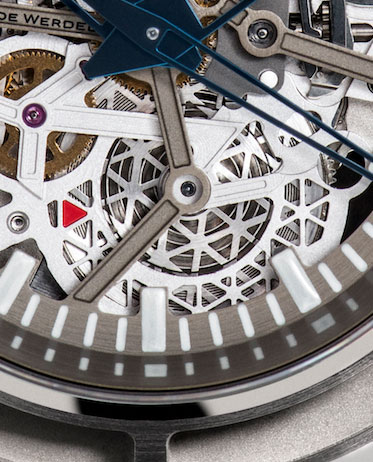
The SpidoLite Titanium is crafted from Titanium Grade 5, a material which is notoriously difficult to work with. The material can easily turn orange from too much heat generated by friction, or the edges get rounded – devastating for such a precisely angular case. The effect of this material when it can be mastered, though, is astounding.
Meanwhile, the SpidoLite Gold is crafted in 18K rose gold, contradicting beliefs that a sports timepiece cannot be created from the heavy precious metal. Weight-saving is not the end-goal, meaning the SpidoLite Gold is free to become something else. It’s not as light as the SpidoLite Titanium, but it does not need to try to be. It has its own identity.
The SpidoLite Titanium retails for CHF 15,000 / EUR 15,300 / GBP 13,200 while the SpidoLite Gold retails for CHF 27,000 / EUR 27,500 / GBP 13,200.
Discover more on the Linde Werdelin website.
Ahead of BaselWorld, Linde Werdelin introduced the world to its fourth generation of the SpidoLite, a series originally conceived after a Mount Everest expedition which debuts as Linde Werdelin’s most extreme skeleton to date, opening the dial up to reveal the brand’s first-ever power reserve indicator. Designed and engineered holistically, the SpidoLite represents an evolution in weight-optimised construction.
There are two new models: the SpidoLite Gold and SpidoLite Titanium. The new models were launched in the run-up to BaselWorld in partnership with Chronopassion, the Parisian boutique owned by industry veteran Laurent Picciotto. Chronopassion enjoyed exclusivity of sales for the duration of BaselWorld but the pieces are now more widely available at select Linde Werdelin retailers.
The extreme skeletonisation makes the SpidoLite Titanium the lightest Linde Werdelin timepiece ever, but weight-saving is a design philosophy of Morten Linde, LW’s Creative Mind and one half of the founding duo, and not an end-goal. That also explains the existence of the SpidoLite Gold; it is a paradox wherein one timepiece is created super-light and the other is crafted in 18K rose gold, defying expectations that the precious metal was too heavy and would not work as an agile sports timepiece.
The end-goal is, instead, to create timepieces that excel for high-altitude sports: mountaineering and skiing. To prove that point, Jorn Werdelin, the other half of the founding duo, and Laurent Picciotto headed to Chamonix, each with a SpidoLite strapped to their wrist. The French Alps provided great skiing for the pair and a stunning backdrop for a few photos of Linde Werdelin’s 2015 novelties.
The SpidoLite Titanium is crafted from Titanium Grade 5, a material which is notoriously difficult to work with. The effect of this material when it can be mastered, though, is astounding. The precisely angular – the iconic – Spido case has been finished in three different styles. Some facets have a microbillé or satin finish, creating a rough, industrial feel. The edge of the bezel, conversely, has been hand-polished by a highly-skilled and experienced Swiss craftsman, to create a visually striking and contrasting reflective effect.
Meanwhile, the SpidoLite Gold is crafted in 18K rose gold, contradicting beliefs that a sports timepiece cannot be created from the heavy precious metal. Weight-saving is not the end-goal, meaning the SpidoLite Gold is free to become something else. It’s not as light as the SpidoLite Titanium, but it does not need to try to be. It has its own identity.
The SpidoLite Titanium retails for CHF 15,000 / EUR 15,300 / GBP 13,200 while the SpidoLite Gold retails for CHF 27,000 / EUR 27,500 / GBP 13,200.

